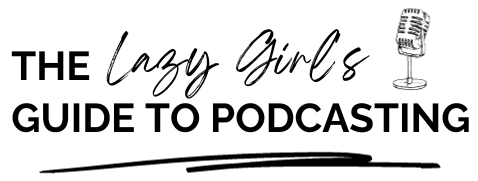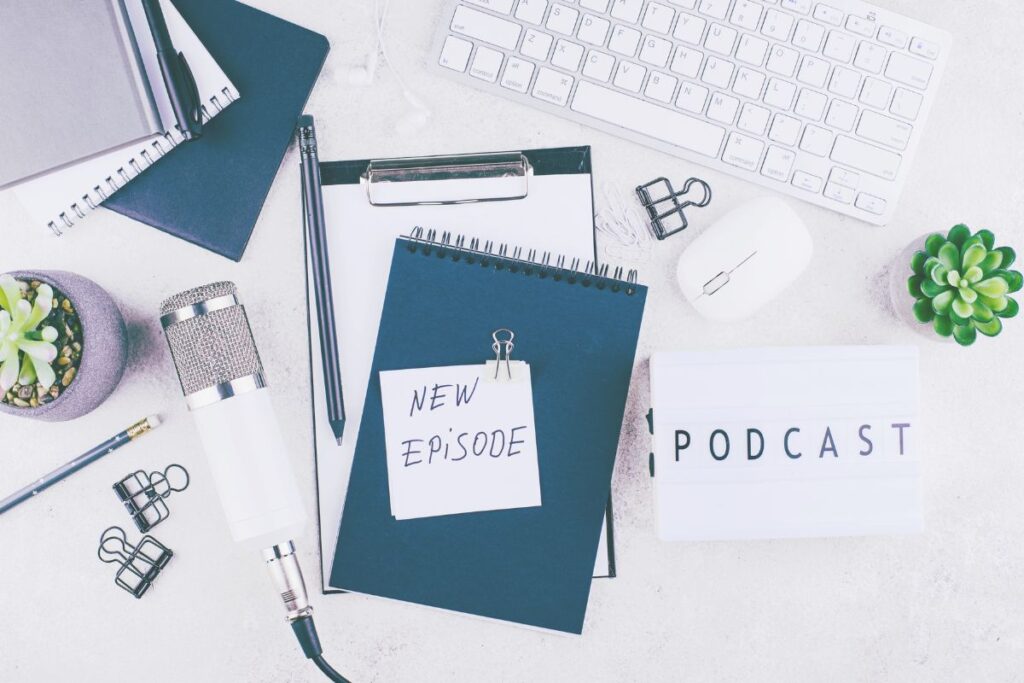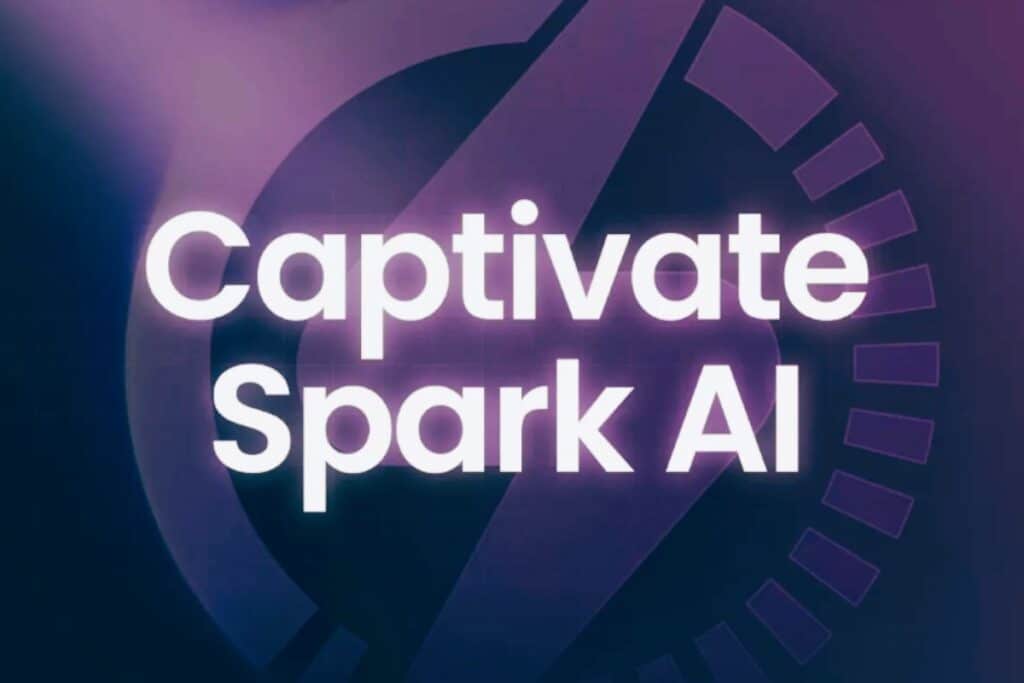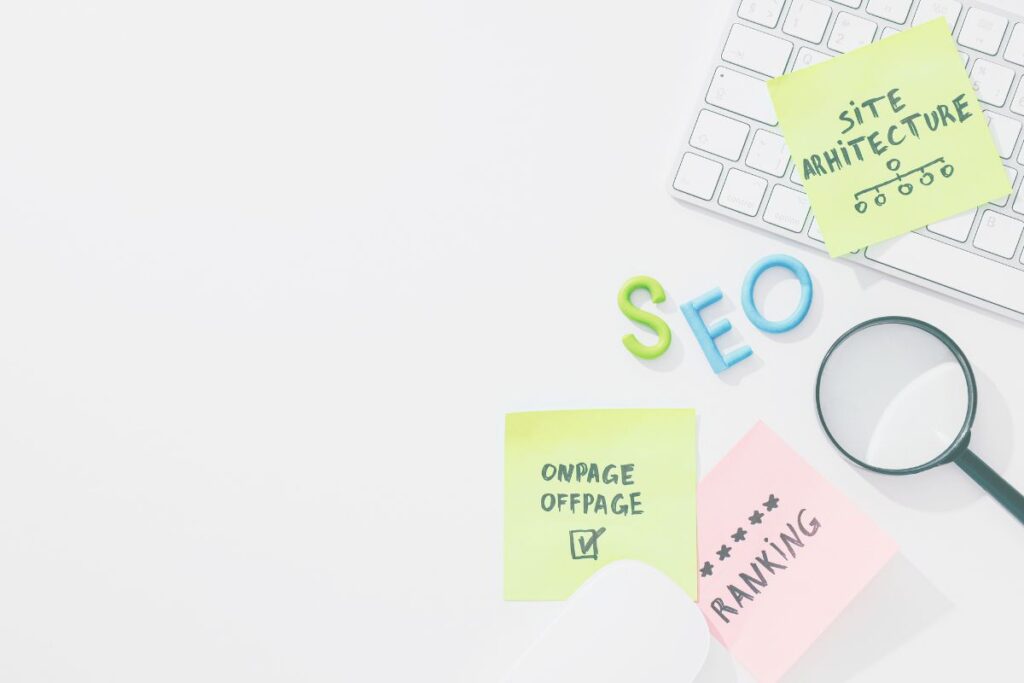Table of Contents
Podcasting is an amazing way to showcase your ideas and knowledge on a topic, build a community, and establish yourself as an expert in your field. But knowing where to start when it comes to launching a successful podcast can be tricky.
Podcasts come in many shapes and sizes, from business podcasts to hobby podcasts; friends sitting around a table having a conversation for an hour, to solo episodes lasting less than 5 minutes.
There really are no rules to how your podcast can look.
But, there are some things that you need to do in order to ensure that your podcast is launched to be as successful as possible. So, in this blog post, we’ll be sharing five key steps to launching a successful podcast, including choosing a topic, creating a plan, recording and editing, launching your podcast, and promoting your show.
Whether you’re looking to build a loyal audience, establish yourself as an authority in your field, or simply connect with like-minded individuals, our guide will give you the practical tips and advice you need to get started with launching a successful podcast.
Related blog post >> What Should My Podcast Be About?
Related blog post >> Why Your Podcast Format Matters More Than You Think
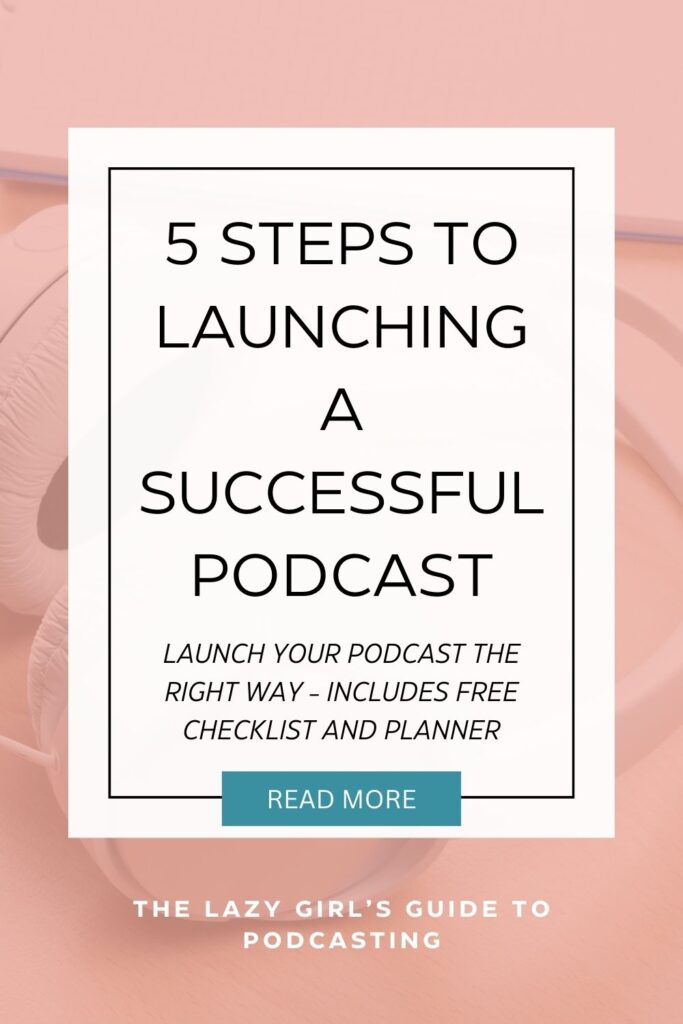
Step 1: Choose a Topic
The first step in launching a successful podcast is to choose a topic that aligns with your brand and interests. After all, you’re the one that’s got to show up to your podcast and talk about your topic episode after episode. The right topic can make or break your podcast, so it’s important to take some time to research and identify a niche that will attract listeners.
Brainstorm potential podcast ideas
One way to start is to brainstorm potential topics that you’re passionate about and have expertise and/or interests in. Consider your audience and what they might be interested in hearing about, and research other podcasts in your niche to see what topics they cover and how you can differentiate yourself.
Once you’ve identified some potential topics, it’s important to narrow down your ideas and find the right focus for you and your podcast.
When choosing a topic, it’s also important to consider the long-term viability of your idea:
- Is it something you can continue to talk about for many episodes?
- Is there a large enough audience for your topic?
These are all important questions to ask yourself before committing to a specific topic.

How to choose a podcast topic
To help you choose your podcast’s topic, I suggest carrying out the ’20 episode list’ task. These ideas won’t all necessarily turn into final episodes. But, by having at least 20 episode ideas listed out, you’re ensuring that you have plenty of content ideas to keep your podcast going. Statistically, 90% of podcasts won’t make it past episode 3.
Why?
Well there’s a few reasons, but one of them is because people go into launching a podcast without any clear plan. They record a few episodes, run out of episode ideas, and then never return to their show again.
Don’t be like those 90% of podcasters.
List out 20+ episode ideas. Worst case scenario, you’ve got at least 6 months worth of weekly content, or nearly a year’s worth of weekly content.
Overall, choosing the right topic is essential for building a loyal listener base and establishing yourself as an authority in your field. Take the time to research and identify a niche that aligns with your brand and interests, and don’t be afraid to get creative and differentiate yourself from other podcasts in your space.
Related blog post >> How to Name Your Podcast in 2024
Related blog post >> How to Start Your Podcast in 12 Easy Steps – A Checklist
Step 2: Create a Plan
Before you start recording your first episode, it’s important to create a plan that outlines the direction of your podcast. A solid plan will help you stay organized, ensure that your content is consistent, and save you time and effort in the long run.
Choosing your podcast’s format
One of the first things to consider when creating a plan is the format of your podcast:
- Do you want to host interviews, solo episodes, or a mix of both?
- Will you include segments or features in your episodes?
Having a clear format in mind will help you structure your episodes and keep your content engaging for your listeners.
Creating a content plan
Once you have your format in mind, it’s important to outline your episodes and plan your content. This includes creating episode titles, writing show notes, and developing a rough script or talking points for each episode. A content plan will help you stay focused and ensure that each episode is aligned with your podcast’s theme and goals.
When you start podcasting, it’s really tempting to just hit ‘record’ and go with it.
But, creating a plan is an important step in launching a successful podcast. Take the time to outline your episodes, choose a format, and plan your content to ensure that your podcast is consistent, engaging, and aligned with your goals.
Related blog post >> 9 Essential Things to Do Before Starting a Podcast in 2024
Related blog post >> The Best Budget-Friendly Podcast Microphone for Beginners
Step 3: Recording and Editing
Now that you have your plan in place, it’s time to start recording and editing your podcast. This can be a daunting task for beginners, but with the right equipment and software, it’s easier than you might think.
Your podcasting microphone
First and foremost, you’ll need a high-quality microphone to capture your voice clearly. There are many affordable options available. My suggestion is to always go with the microphone that you can afford and you are willing to learn how to use.
Remember; a $1,000 microphone won’t automatically give you amazing audio if you don’t know how to set it up and use it properly.

Recording and editing software
In addition to a microphone, you’ll also need software for recording and editing your podcast. Audacity and GarageBand are popular options that are free and user-friendly, while Riverside.fm and Descript are more advanced tools with additional features.
When it comes to recording, it’s important to find a quiet space where you won’t be interrupted or distracted. Consider investing in soundproofing materials or using a pop filter to reduce background noise and improve the clarity of your audio. And no, soundproofing doesn’t need to be costly. Blankets, towels, pillows; anything soft will help.
Once you have your raw audio recorded, it’s time to edit your episodes. This includes removing unwanted sections, adding intro and outro music, and adjusting levels and EQ to ensure that your audio sounds polished and professional.
Recording and editing your podcast can seem overwhelming at first, but with the right tools and techniques, it’s a manageable task. Invest in a quality microphone, find a quiet recording space, and use software to edit your episodes to produce high-quality content that engages your audience.
Related blog post >> Descript: The Audio Editing Tool Every Podcaster Needs
Related blog post >> Riverside.fm: Everything You Need To Know To Record Your Podcast Remotely
Step 4: Launching Your Podcast
Once you’ve recorded and edited your first few episodes, it’s time to launch your podcast and get it in front of your target audience. A strong launch can help create buzz around your new show and attract new listeners, so it’s important to plan ahead.
One of the first things to consider when launching a successful podcast is the launch date. Choose a date that gives you enough time to prepare and promote your show, but not so far in the future that you lose momentum.
Next, submit your podcast to directories such as Apple Podcasts, Spotify, and any other podcast directory that you can find. This will help your show reach a wider audience and make it easier for listeners to find and subscribe to your content. Make sure that you submit your RSS feeds before your launch date so that everything is ready to go when you publish your first episodes.
What is an RSS feed?
An RSS feed is basically a link that carries the information of your podcast. Everything about your podcast, including your episodes, show notes, podcast artwork, podcast name, literally everything(!) is transferred by this link.
This link is what you give to podcast directories. Once submitted, everytime you update something about your podcast, i.e. change your artwork, or publish a new episode, your podcast host will send this information along your RSS feed to the podcast directories where you audience will listen to your content.
How do I submit my RSS feed to podcast directories?
The vast majority of podcast hosts will submit your RSS feed to podcast directories with 1-click set up. Some podcast directories might require slightly more effort on your part, but your podcast host will give you instructions about how to do this.
How to choose a podcast host
With so many podcast hosts to choose from, it might feel a little daunting to know where to start. My recommendation for a podcast host is Captivate.fm. It’s who I use and I love them. They’ve got a tonne of growth tools to help you to promote your show and they make it super simple to submit your podcast RSS feed to podcast directories.
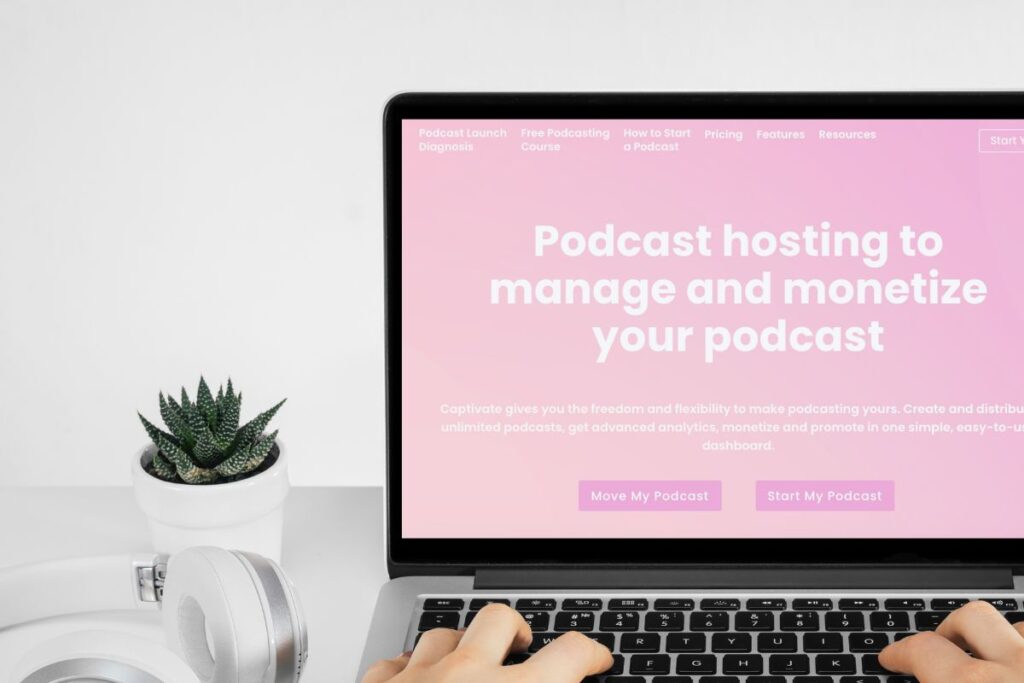
Tips for launching a successful podcast
To promote your show, consider creating a trailer or teaser episode that previews your upcoming content and gets listeners excited about what’s to come. Share your trailer on social media, email newsletters, and other platforms where your target audience is active.
Other ways to promote your show include guest appearances on other podcasts, collaborating with influencers or brands in your niche, and running paid ads on social media or podcast platforms.
Related blog post >> Podcast Distribution: Why Your Podcast NEEDS to Be Everywhere
Related blog post >> How to Get Your Podcast on Apple Podcasts (iTunes)
Step 5: Promoting Your Show
Once your podcast is launched, it’s important to continue promoting it to attract new listeners and keep your existing audience engaged. Effective promotion can help you grow your listener base, increase engagement, and build a loyal following over time.
One of the most effective ways to promote your show is through social media. Choose platforms where your target audience is active and create engaging posts that highlight your latest episodes, guest appearances, or behind-the-scenes insights. Use relevant hashtags and engage with your followers to build relationships and foster community.
Another effective promotion strategy is email marketing. Create a mailing list and send regular newsletters to your subscribers, sharing exclusive content, behind-the-scenes insights, and updates on upcoming episodes.
Other strategies for promoting your show include collaborating with influencers or brands in your niche, running paid ads on social media or podcast platforms, and leveraging SEO to optimize your podcast’s discoverability.
Ongoing promotion is essential to grow your podcast’s listener base and keep your audience engaged. Use social media, email marketing, and other strategies to reach your target audience and foster community around your show. With the right promotion plan, your podcast can become a powerful tool for connecting with your audience, growing your brand, and achieving your business goals.
Related blog post >> How to Grow Your Podcast Audience: And the 3 Ways You’re Probably Killing It Without Realising
Related blog post >> The No 1 WORST Way to Get More Podcast Listeners
Final Thoughts for Launching a Successful Podcast
Starting a podcast can be a brilliant way to connect with your audience, build your brand, and achieve your business goals. By following the five steps outlined in this post – choosing a topic, creating a plan, recording and editing, launching your podcast, and promoting your show – you can create and launch a successful podcast that engages your audience and grows your brand over time.
